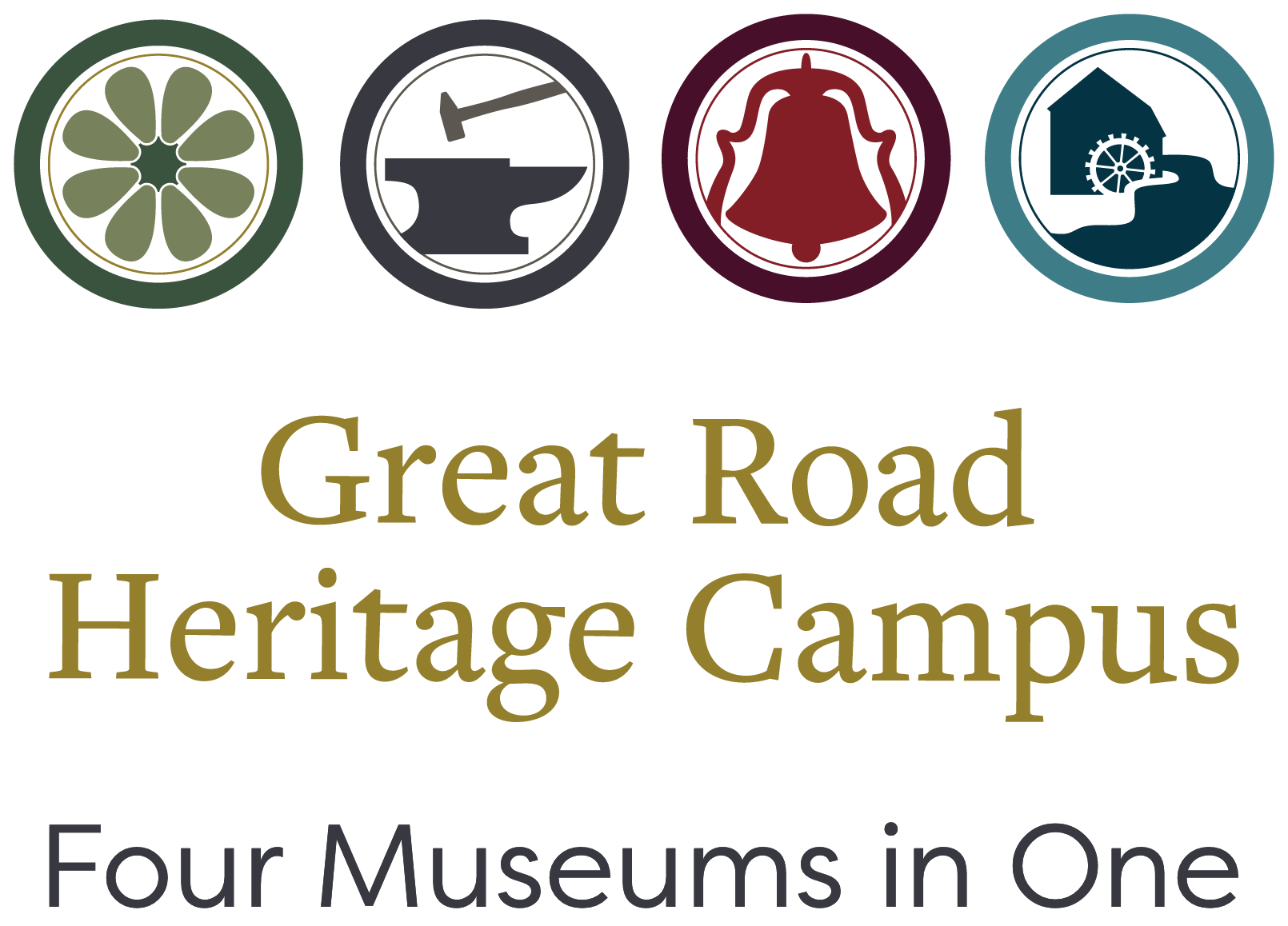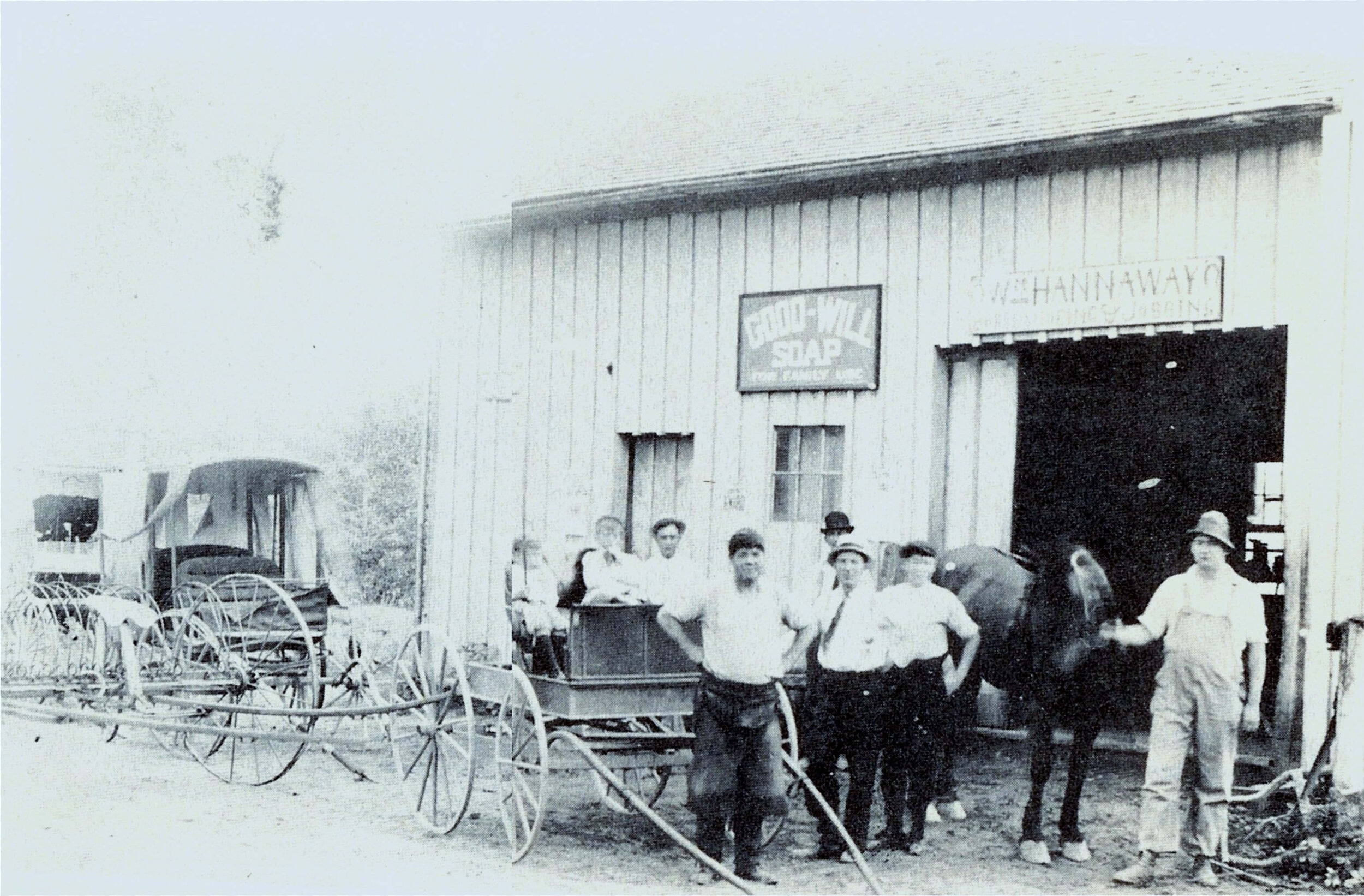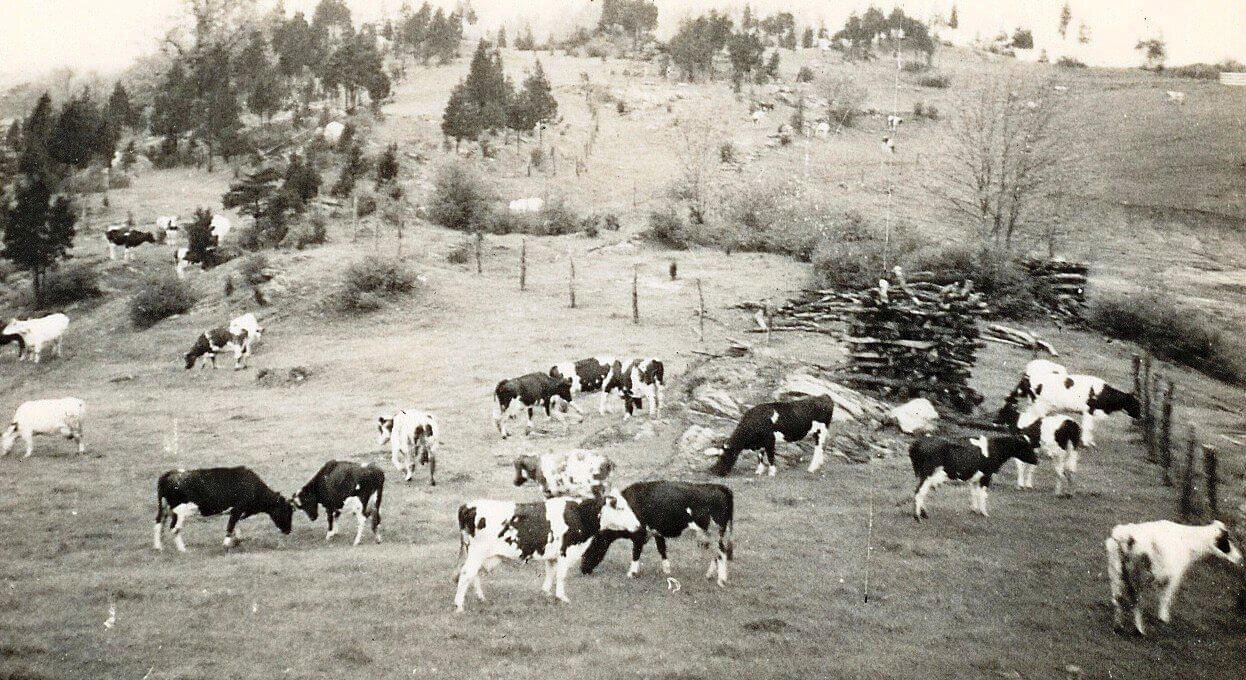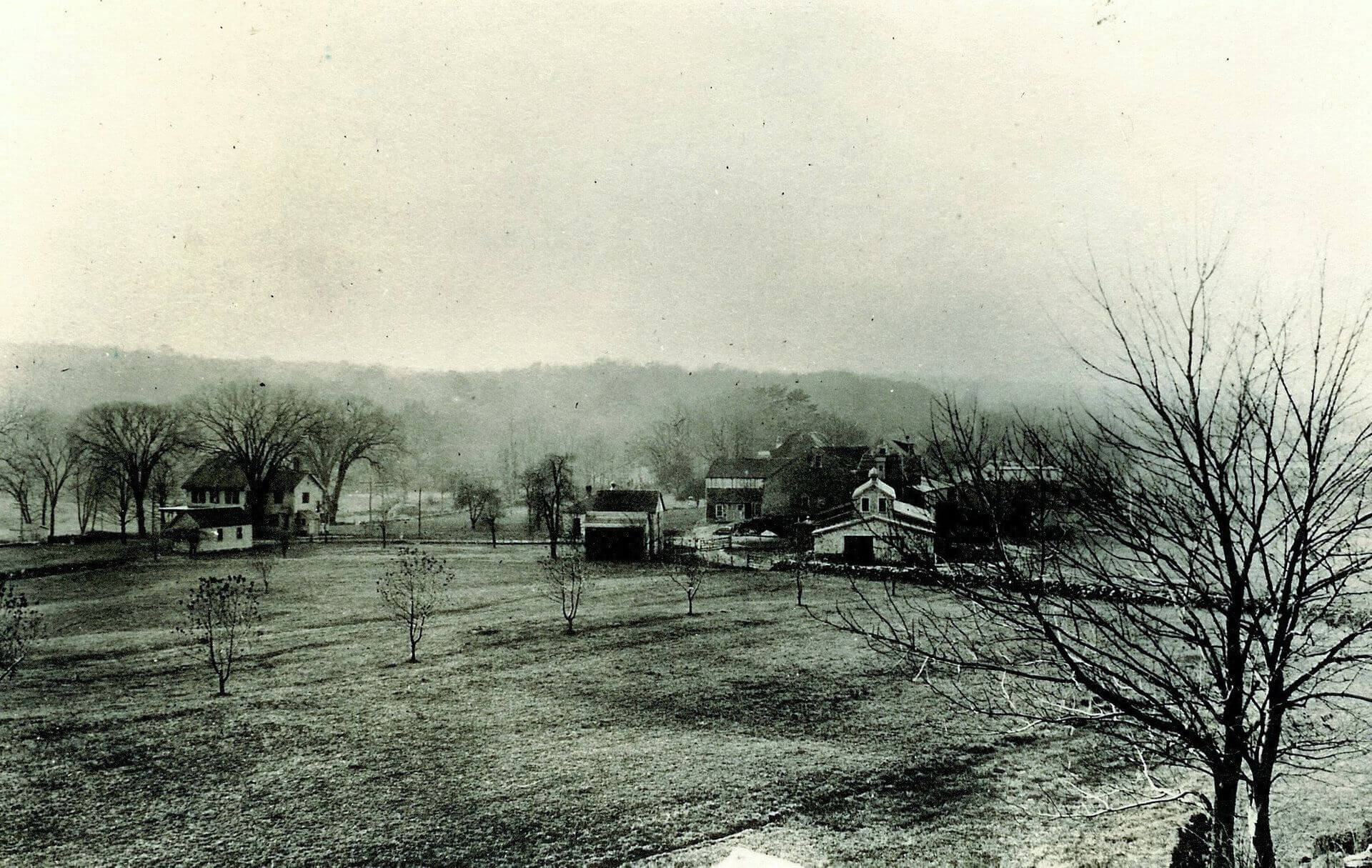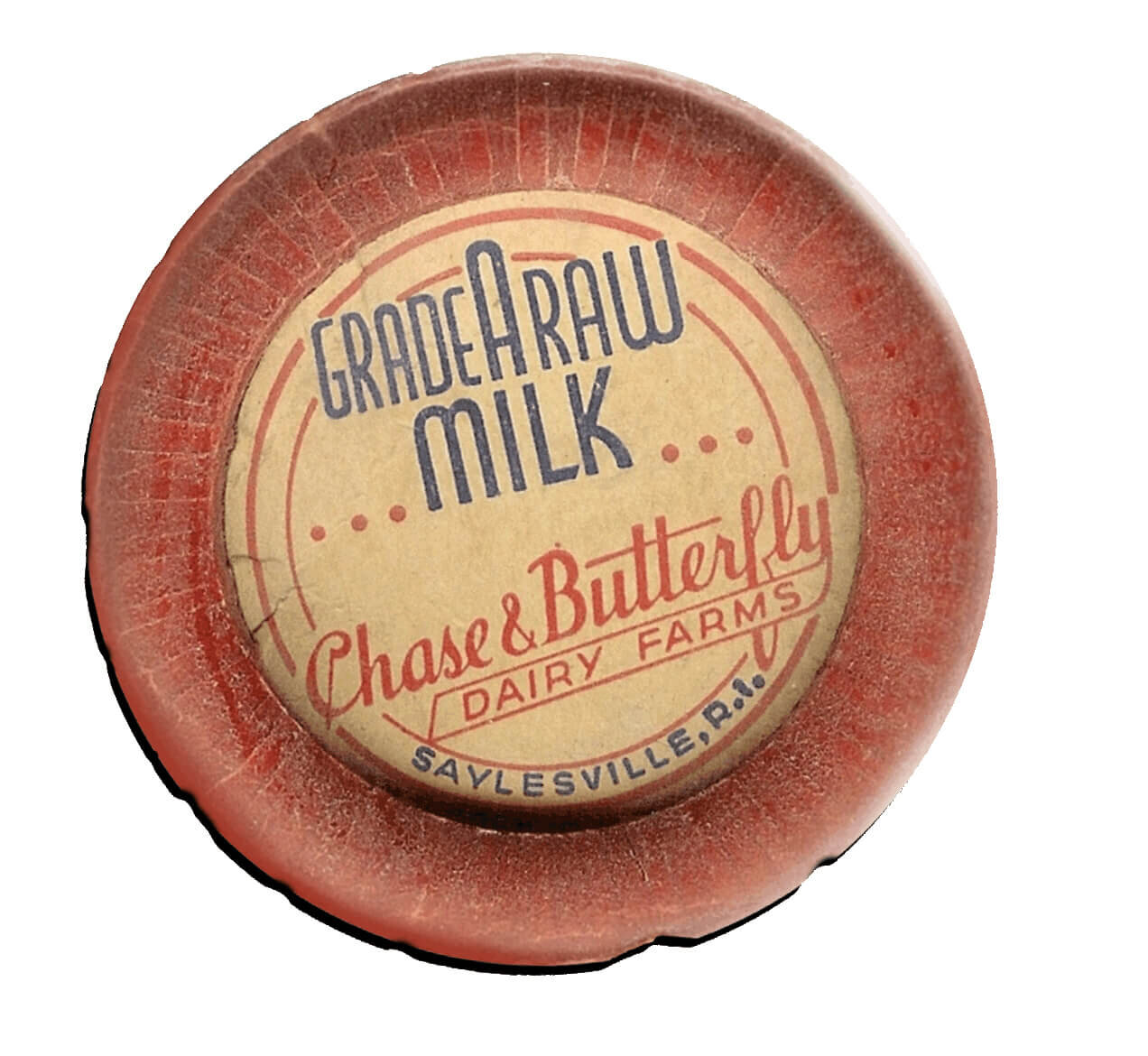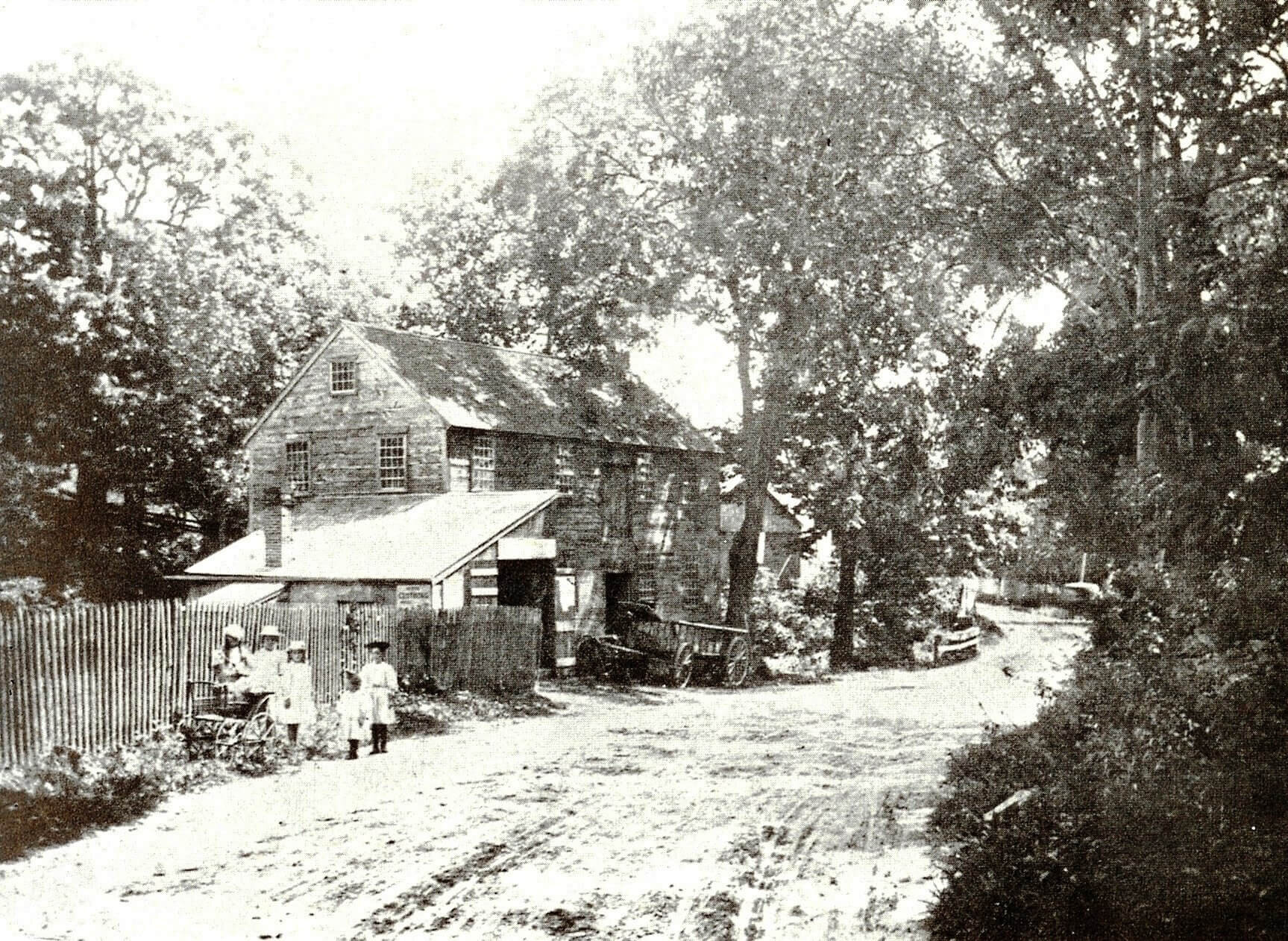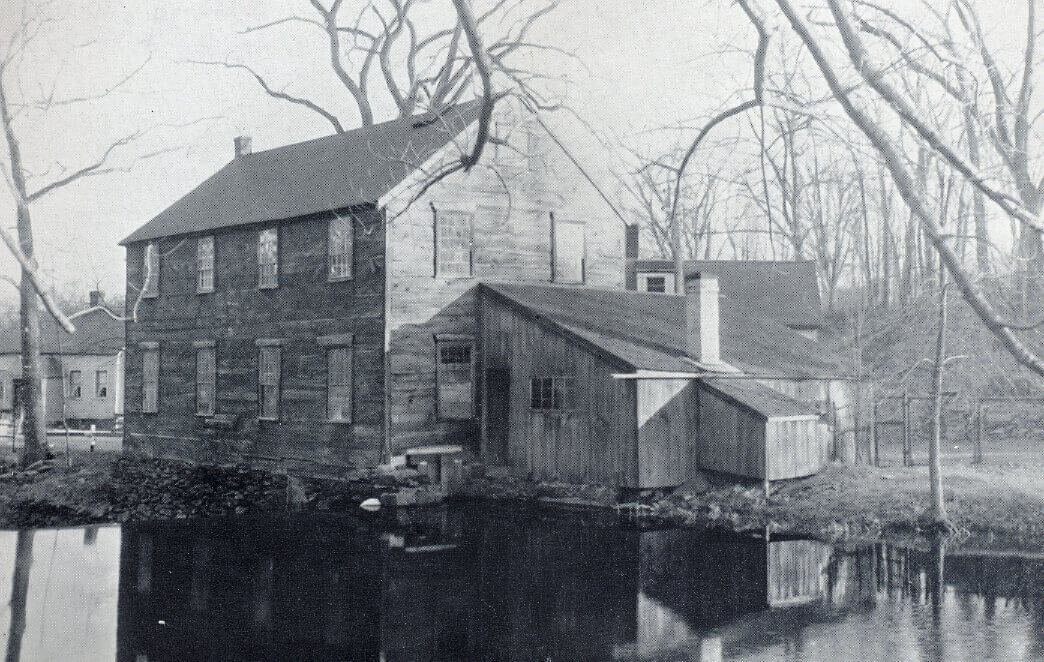The Great Road to Mendon
When it was built, Stephen Smith’s stately mansion was oddly situated among farms and forests along Great Road and the Moshassuck River. Opened in 1683, Great Road is one of the oldest thoroughfares in the country, following in part a Native American trail. It originally ran from Providence to Mendon, Massachusetts, the first English settlement in south-central Massachusetts. Great Road was built to encourage settlement in the Blackstone and Moshassuck River valleys and transport the region’s products to the Providence marketplace.
Great Road was vital to the development of Rhode Island’s limestone mining industry, which became a significant part of the state’s economy. An important ingredient in colonial plasters and mortars, lime was mined in the nearby village of Lime Rock, transported to Providence, and exported to other cities along the coast and overseas. Quarrying began in the 1660s, and by the mid-18th century, Lime Rock was a boomtown.
One of the country’s first and longest-running industries, limestone mining continues in Lime Rock.
Visit Us!
Step into history by seeing it firsthand and all it has to offer.
Great Road Historic District
In the early 19th century, the Great Road Historic District was known as the Moshassuck River District. The river provided power for more than a dozen smaller manufacturing companies that sprouted along this half-mile stretch from 1800-1850, including the Moffett Mill and the Butterfly Mill. Great Road was also a major agricultural district, with the Chase Farm and many others dotting the surrounding landscape in the 19th century.
Today, large sections of Great Road no longer exist or have lost their historic character. The Great Road Historic District survives because this small section was abandoned during a road-straightening project in the early 20th century. Several historic structures and landscapes still remain to remind us of the past.
Hannaway Blacksmith Shop
William H. Hannaway opened his first blacksmith shop in a lean-to which was located on the west side of the Moffett Mill, an 1812 structure down the street from Hearthside. In 1901, Hannaway purchased a former carriage house across from Hearthside to conduct his blacksmithing business. He and his wife eventually built a house on the property as well. The blacksmithing business was quite successful, but with the advent of the automobile, there was less and less demand for his trade. In the 1920’s, he closed his smithy, doing only part-time work for the horse-riding academy which was located at the Butterfly House next door and sharpening tools for neighbors.
Hannaway was a large and powerful man who enjoyed his profession. Most of his work involved shoeing horses and setting wheels for carts and wagons. He was easily able to pick up the horses’ legs. If any horse gave him a problem, he took it as a personal challenge to shoe it. While working, he would often attract a small crowd. Children especially enjoyed watching him. Hannaway was an amiable and pleasant man, and he kept up a constant conversation while on the job.
Hannaway passed away in 1942, but one of his daughters, Cecilia Lee and her husband, purchased the house. The blacksmith shop stood abandoned for more than 40 years and fell into disrepair. In 1985, Mrs. Lee donated it to the Town of Lincoln. The building was dismantled, moved to its current location on the 100-acre Chase Farm, and fully restored.
BUTTERFLY MILL
In 1812, Stephen Hopkins Smith also built the Butterfly Mill across from Hearthside. It was one of Rhode Island’s earliest stone textile mills, known as the Smith Manufacturing Company. The local masons who built Hearthside used the same locally quarried stone to construct the mill. When the stone cutter split one of the stones, which was darker than the rest, he noticed that the two halves resembled a butterfly’s wings. Smith instructed the masons to set the two stones on the front of the building. The design was so unique that the mill became known as the Butterfly Mill. In 1813, Smith purchased a bell to hang in his mill. During the War of 1812, the USS Constitution got her nickname “Old Ironsides” for the victory over the British ship the HMS Guerriere. The Guerriere’s bell was removed during that victory and sold among other naval scrap the following year. The famous bell hung in the belfry for over a hundred years until it was donated to the USS Constitution Museum by one of the owner’s of the Butterfly House. Unfortunately, the Smith Manufacturing Company was not successful as a textile business. Over the years, the Butterfly Mill has been used for many different purposes, including cotton spinning, weaving, textile printing, worsted braid and yarn making, leather tanning, woodworking, and cotton wadding. It has been home to a grocery store, a schoolhouse, a machine shop, a distillery, and the Hope Riding Academy Stable. The mill sat idle for many years and in the mid-20th century, there were plans to open it as a fine dining establishment. A heavy winter snowstorm resulted in the roof collapsing. The damage was so extensive that the decision was made to raze the second story and it was converted into a single-story residence. The butterfly-shaped stones now appear in the chimney of the house.
Chase Farm
The land known as Chase Farm was settled by Thomas Arnold in 1661 and stayed in the Arnold family until 1810, when Benjamin and George Smith, Stephen Smith’s father and brother, bought it. The Chase family purchased the property in 1867 and farmed the land there for more than a century. The Chase dairy, next door to Hearthside, began operating between 1884-1895, when the first pasteurizing equipment and the milk bottle became available. The original barn was destroyed by a lightning storm in 1925, leaving only the stone dairy building. With no barn for his cows, Benjamin Chase purchased a neighboring farm known as Mariposa (meaning butterfly), from Frank Sayles and moved his operation there, naming it Chase and Butterfly Dairy Farms. The business produced and delivered dairy products door-to- door to customers throughout Lincoln and neighboring towns. The last working dairy farm in Lincoln, Chase & Butterfly Dairy Farm dairy closed in 1965. The original Chase Farm land and farmhouse were purchased in 1979 by the Town of Lincoln and today the picturesque meadows remain for the enjoyment as a public park while offering an ideal location for living history reenactments sponsored by the Friends of Hearthside. The 1890 farmhouse has been preserved and is a private residence.
Moffett Mill
Constructed in 1812 by local mechanic George Olney, the Moffett Mill offers a rare glimpse of the early American machine shop. The Moffett Mill was among the first mills in the area to have new metal-working technology including a metal lathe and drill press. In the early 1800s, Olney made tools and repaired vital machine parts for the other mills along Great Road, including his own thread mill at the pond in Lincoln Woods, Stephen Smith’s Butterfly Mill, and Captain Wilbur Kelly’s mill at Old Ashton. Arnold Moffett purchased the mill in 1850, replacing the breast-style waterwheel with a more modern, water-driven iron turbine. He expanded into furniture making and wagon building. At the time of the Civil War, the mill’s second floor housed braiding machines used to produce laces for shoes and corsets. By 1880, gristmill orders accounted for a large share of the Moffetts’ business, and a sawmill produced boards and wooden boxes for customers in the area. By the turn of the century, the mill closed and the building abandoned. In 2000, the Moffett Mill was stabilized and restored, with the original equipment still intact. Today, the mill is open for occasional public viewing under the stewardship of the Friends of Hearthside.
Pullen Corner - Hot Potato School House
The Pullen’s Corner School is one of Lincoln’s earliest schoolhouses, operating as a school until 1922. Originally located at the corner of Whipple and Angell Road in the village of Lime Rock, it was re-located to its present home at Chase Farm Park in 2015. It is a small, one-story, gable-roofed, one-room schoolhouse, which reflects the growth and variety in public education in Lincoln. Unlike the larger schools located in the mill villages, the Pullen’s Corner School served a rural community in western Lincoln. Eight different grade levels were taught at this school, all in one large room, for the children of local farmers. The school became affectionately known as “The Hot Potato School”, nicknamed by a visiting superintendent who was amused by the fact that the teacher, Estelle Collier, baked potatoes for the children’s lunch using the pot-bellied stove in the school. Pullen’s Corner School, and the other one-room schoolhouses in the area, closed when the new Lincoln Community School opened on Breakneck Hill Road in the 1920s. The school was placed on the National Register of Historic Places in 1984 because of its historic significance. It was privately-owned until gifted to the town of Lincoln in 1990.
Lincoln Woods State Park
The Metropolitan Park Commission, formed by the RI General Assembly, was charged with creating and implementing a master plan for a system of parks in the state. On February 12, 1909, on the 100th anniversary of President Lincoln’s birth, the commission met in the drawing room at Hearthside to decide upon their first purchase. They voted to buy Quinsnicket, the land that Stephen Smith had once owned and beautified with his plantings, naming the new state park Lincoln Woods in honor of the 16th president. Quinsnicket, meaning “place of large rocks,” is just one section of the eventual 458 acres that comprised Lincoln Woods by 1910, with the additional property purchased from the Olney and Arnold families.
